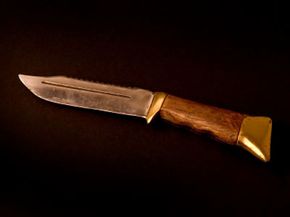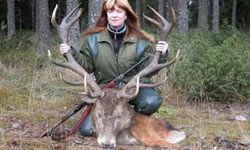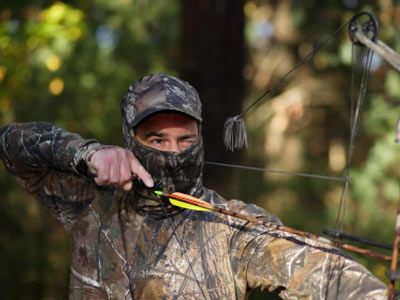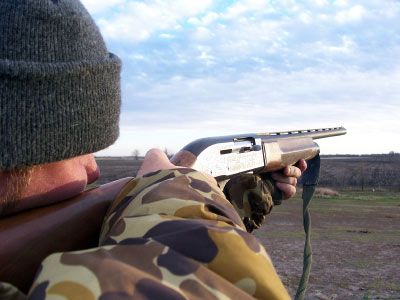No hunter would be fully equipped without a knife. Your blade is essential for field dressing, skinning and preparing game, as well as for safety. Regardless of what you're hunting or where you're hunting it, the knife is an invaluable tool.
On rare occasions, the knife also becomes a weapon. It depends on the circumstances, of course, and on the knife. It could be catastrophically foolish to attack game with a knife designed only for dressing meat or blazing trails. However, if you have the right knife, nothing brings you closer to the prey, or lets you experience the hunt more immediately. For many knife hunters, nothing provides a greater thrill.
Advertisement
Knife hunting has an obvious drawback: Unless you can throw knives with the precision of a circus performer, you have to get quite close to your prey to stab it. That can be dangerous. It also limits the kinds of prey you can pursue -- you wouldn't use a knife to attack a moose, for example.
Most contemporary knife hunting focuses on the wild boar, a violent, powerful and intelligent foe. The hunt may or may not involve dogs. It always involves danger. For knife-hunting aficionados, though, the danger is part of the appeal.
The knife has evolved from a crude stone implement to an advanced blend of metals. Many of today's methods of creating knives combine Western techniques with those perfected in the forges of the Japanese samurai; contemporary manufacturers such as Global and Kershaw are still affiliated with foundries in the same region of Japan that once armed the samurai.
This article takes a look at the development of knives and knife hunting, and the historical trends that have shaped modern-day hunting. You'll also learn some strategies to take out into the field, as well as the all-important ethics of hunting. Read on.
Advertisement



